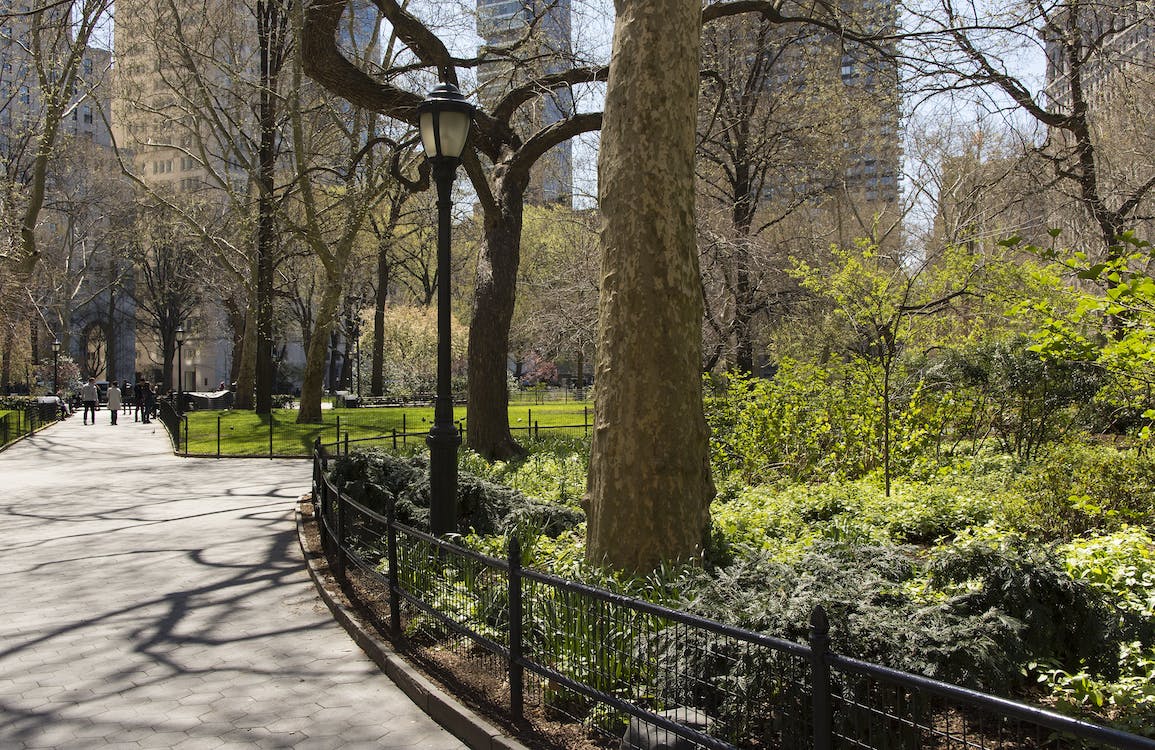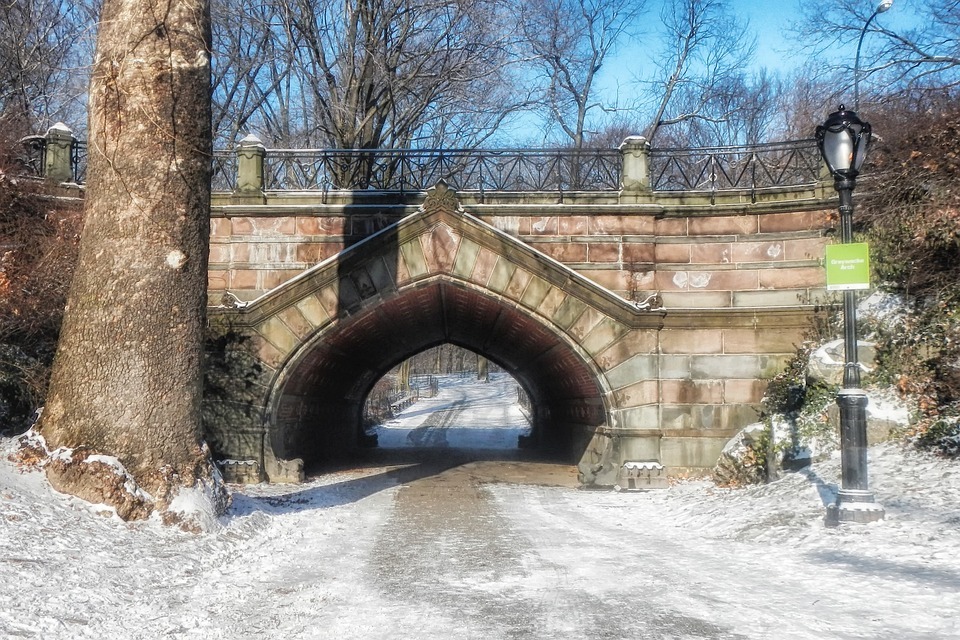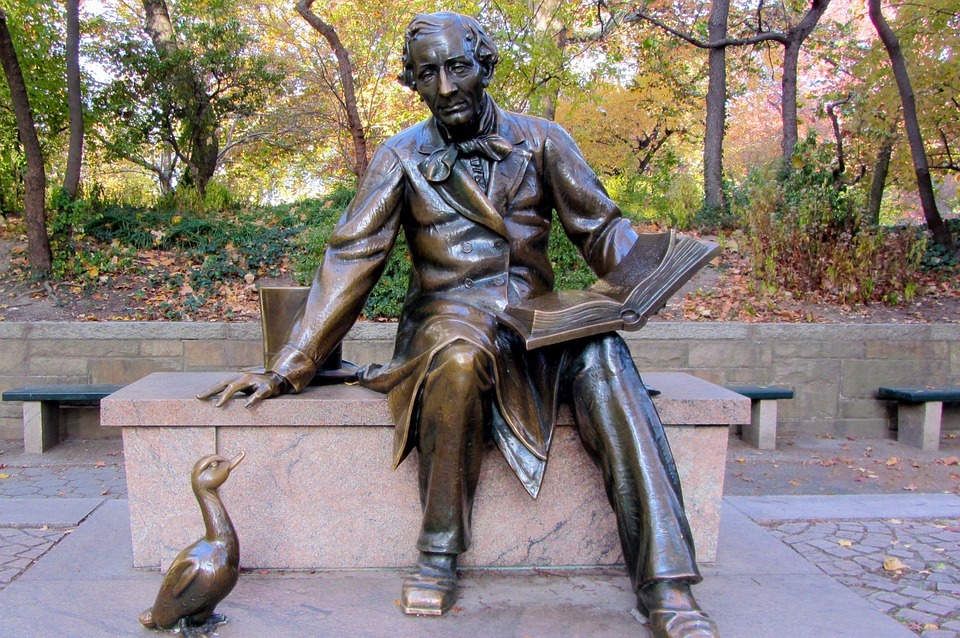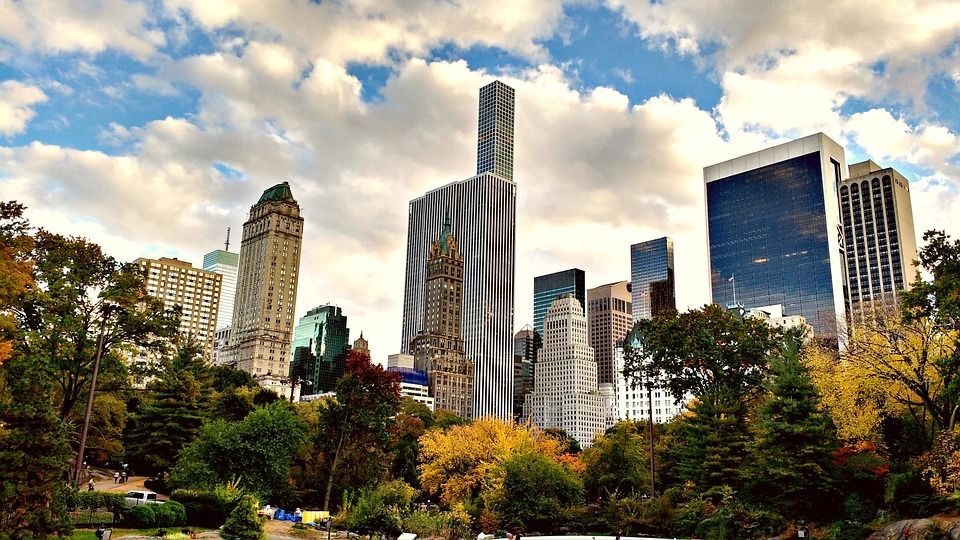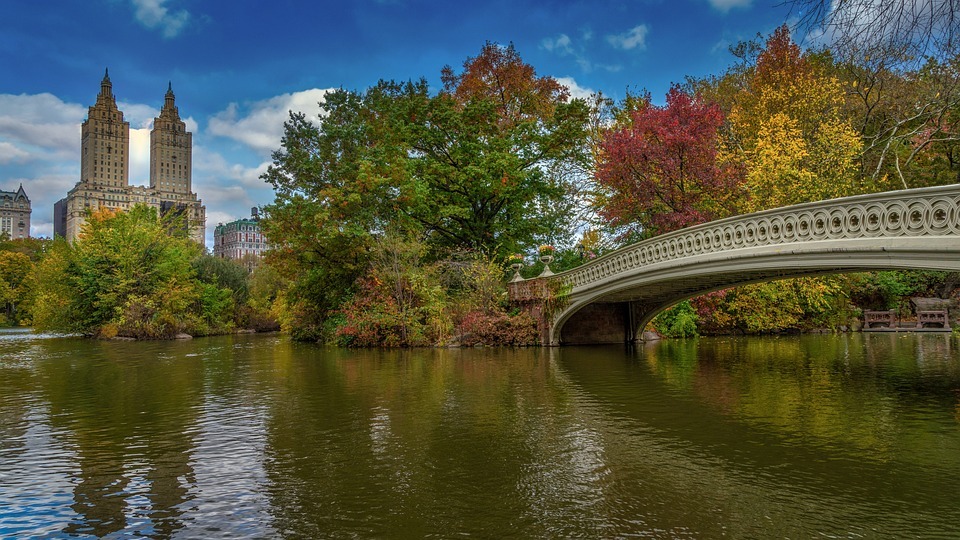Central Park, nestled in the heart of Manhattan, is an iconic urban oasis that has captured the hearts of New Yorkers and visitors alike. This sprawling green space is more than just a park; it’s a symbol of the city’s resilience and determination to create something beautiful out of a bleak past.
For over 160 years, Central Park has played a pivotal role in the life of New York City, providing a vital source of clean air, recreational opportunities, and cultural events. It’s no wonder that this amazing park is known as the “people’s park,” a space where everyone is welcome, regardless of their background or economic status.
From its humble beginnings to its current status as a cherished landmark, there is so much about this beloved New York City gem. So, sit down, relax, and join in for an immersive walk through the breathtaking landscapes, captivating stories and the history of Central Park.
The Early Years of Central Park
Central Park has become the most popular park in the United States, attracting over 42 million visitors each year who marvel at its vast collection of trees, flowers, grass, paths, architecture, benches, rocks, and overall beauty.
However, the park wasn’t always so grand, as it had humble beginnings that ultimately led to its flourishing. To truly understand Central Park’s history, it is important to learn about the reasons behind its creation, the process of its construction, and the outcomes during its earliest years.
History of the Land Before Central Park
In the early 19th century, New York City’s population grew rapidly, almost quadrupling between 1821 and 1855. As the city expanded northward into Manhattan, people sought out the few open spaces available, such as cemeteries, for relaxation and escape from the bustle of city life centered on Lower Manhattan.
However, the Commissioners’ Plan of 1811, which laid out Manhattan’s street grid, did not include any significant public green spaces like Central Park. John Randel Jr. surveyed the land within the future park site for the construction of street intersections.
Over time, people became increasingly aware of the need for a large public park in Manhattan to provide a space for recreation and relaxation. This idea gained momentum in the 1840s, which was eventually given the green light in 1853. The land chosen for Central Park was rocky and swampy, and transforming it into a naturalistic paradise required years of hard work.
The Creation of Central Park
The idea for Central Park began with philanthropists and City leaders who sought to create a space that would provide New Yorkers with a respite from the stresses of city life. In 1853, state officials approved funds to purchase the land from 59th to 106th Streets, between Fifth and Eighth Avenues.
The board of land commissioners conducted property assessments on over 34,000 lots in the area and completed them by July 1855. The site was home to a community of African Americans and Irish immigrants, and most of the residents were evicted under eminent domain to make way for the park. Clearing of the land began in October 1855, and the total cost of the land acquisition ended up being $7.39 million.
Design and Construction of Central Park
In 1857, a design competition was held, and out of 33 entries, the Greensward plan by Frederick Law Olmsted and Calvert Vaux was chosen. The plan was naturalistic, and its standout features included the sunken transverse roads that were hidden below the landscapes, out of sight from Park goers. Olmsted’s vision for Central Park was inspired by Birkenhead Park in England, which was built as a public space for people of all backgrounds. Construction on Central Park began in 1858, and it took around 15 years to complete. Workers moved nearly 5 million cubic yards of stone, earth, and topsoil, built 36 bridges and arches, and constructed 11 overpasses over the transverse roads. The landscapes were man-made, and all built by hand.
Opening of Central Park
In May 1858, the first section of Central Park, the Lake, opened to the public. The Park’s design aimed to provide visitors with a diverse range of landscapes and experiences across its 843 acres. From sweeping lawns to picturesque woodlands, meandering streams to broad lakes, visitors could explore the Park via winding paths, a carriage drive, or a bridle path.
As time passed, additional features were added to the Park, including baseball and soccer fields, a carousel, two skating rinks, a zoo, formal gardens, commemorative monuments, and concert and theater venues. However, the Park’s final cost was $14 million, significantly exceeding its original budget of $5 million.
Let’s take a closer look at the park’s remarkable features.
| Features | Measurement |
| Height (at highest point) | 141.8 feet (43 meters) |
| Width (at widest point) | a half-mile wide and 2.5 miles long |
| Number of Trees | Over 18,000 |
| Number of Playgrounds | 21 |
| Number of Lakes and Ponds | 8 |
| Number of Bridges | More than 36 bridges |
| Number of Statues and Monuments | 29 |
Central Park in the 19th Century
Despite its construction coinciding with the Civil War, Central Park continued to grow in popularity. The completion of major structures such as the Music Stand, Casino restaurant (now demolished), and the Bethesda Terrace and Fountain marked the end of construction on South Park. The Bethesda Fountain became a central gathering place, attracting visitors with its grandeur and beauty.
Social and Cultural Events in Central Park
Central Park also became a hub for a variety of activities catering to people of different backgrounds and economic statuses. Wealthier visitors could ride horses or take tours, while the underprivileged could enjoy ice skating or rowing. In addition to physical activities, the park also hosted numerous social and cultural events.
Several arts groups are dedicated to performing in the Central Park, including Central Park Brass and the New York Classical Theater. The park also hosts regular summer events, such as the Public Theater’s free open-air theater productions in the Delacorte Theater, which includes Shakespeare in the Park, and the City Parks Foundation’s Central Park Summerstage, featuring free performances including music, dance, spoken word, and film presentations.
Additionally, the Central Park Conservancy has hosted the Central Park Film Festival, a series of free film screenings every August since 2003. Further, Central Park has hosted many famous concerts, including Simon and Garfunkel’s reunion concert in 1981, which attracted over 500,000 people. Other notable concerts include Diana Ross in 1983, Dave Matthews Band in 2003, and the Global Citizen Festival. These events have drawn tens of thousands of visitors from all social classes and have become a beloved part of the cultural fabric of New York City.
Changes in the Park’s Design and Management
The park began to decline in the early 1900s due to politics complicating its maintenance. The decline was reversed in 1934 when Mayor Fiorello H. La Guardia appointed Robert Moses NYC Parks Commissioner and received federal funding for citywide planning projects. In 1960, Moses resigned from his position, leaving the park without any plan for ongoing maintenance.
As a result, the park became overrun with crowds of people with no oversight. The meadows turned into dust bowls, benches, and lights broke, playground equipment became unusable, and the park’s 100-year-old infrastructure began crumbling.
Central Park in the 20th Century
Central Park in the 20th century experienced a significant decline, but thanks to the ground-breaking public-private partnership created by Elizabeth Barlow Rogers and Parks Commissioner Gordon Davis, the park has since undergone a transformational renewal.
Through the merging of the Central Park Task Force and the Central Park Community Fund, the Central Park Conservancy was born. The Central Park Conservancy’s objective is to protect and honor Central Park as a haven from the hustle and bustle of urban life while improving the pleasure and welfare of all those who visit.
Restoration and Renovation Efforts
From 1987 to 2008, the restoration process took place, during which many private individuals, foundations, and corporations generously provided funding for the initiative. The conservancy even established an endowment, ensuring Central Park’s future upkeep. Douglas Blonsky, Central Park’s Administrator, took on the additional role of President and CEO of the conservancy in 2004, overseeing the park’s management and all fundraising and administrative duties.
Blonsky’s innovative “zone management system” brought accountability, pride, and success to the Parks Department, dividing the park into 49 zones, each headed by a gardener who supervised a grounds crew. This approach gradually brought social changes, returning the sanctity of Central Park. For instance, the conservancy was the first to adopt a zero-tolerance policy for garbage and graffiti.
In 2016, the conservancy launched Forever Green, a ten-year campaign aimed at restoring and preserving the park’s historical and architectural significance. The initiative’s goal is to raise $300 million, enabling long-term planning for the park’s woodlands, significant structures, and playgrounds.
Central Park in Popular Culture
Central Park’s renewal efforts have also played a significant role in popular culture. The park has been a filming location for numerous movies, including “Home Alone 2: Lost in New York,” “When Harry Met Sally,” and “Elf.” There are several other movies set in New York City.
It has also served as a source of inspiration for many famous artists, including John Lennon, who lived nearby and often visited the park. His memorial, Strawberry Fields, located on the park’s West Side, remains a popular destination for tourists and locals alike.
Central Park Today
As one of the most visited parks in the world, Central Park is a beloved icon of the city that never sleeps. But beyond its scenic beauty and historic landmarks, there’s a lot more to this urban oasis that might pique your interest. Due to the amazing subway system of NYC, Central Park is easily approachable now from numerous areas of New York.
Current Status and Management of Central Park
The Central Park Conservancy with over 40 years of experience in park maintenance is responsible for the day-to-day care of this iconic public space. It has invested nearly $1 billion over the past years to restore and maintain the park, including Sheep Meadow, the Hallett Nature Sanctuary, the Dairy Visitor Center & Gift Shop, and Heckscher Playground and Ballfields at the southern end of the park.
With a workforce of more than 300 dedicated professionals, Central Park is kept in immaculate condition, despite the extensive usage and massive foot traffic. The team’s responsibilities include everything from horticulture and turf care to waste management and visitor services.
The park’s management and maintenance (funded by individual donations) are allowing the team to invest nearly $100 million annually in preserving and enhancing the park’s beauty. As a result, the NYC Department of Parks and Recreation can allocate the majority of its budget to other parks, generating more than $1 billion in economic activity.
Central Park’s Role in the Community
Central Park’s 18,000 trees, which include the largest group of American elms in the country, play a crucial role in the community. These trees not only enhance the picturesque scenery but also absorb more than one million pounds of carbon dioxide from the city’s air each year, making the air fresher and cleaner for New Yorkers to breathe.
Natural Air Conditioners
The Park’s trees act as natural air conditioners, providing much-needed shade during heat waves that can plague the city during the summer months. They also absorb water, which evaporates to cool down the surrounding air, effectively reducing the effects of urban heat islands in the city.
Recreational Amenities
The benefits of trees go far beyond their air-cleaning and cooling properties. The compost generated from the 3,000 cubic yards of leaves and 5,000 cubic yards of tree waste annually provides natural fertilizers to the Park’s newly planted trees and flower gardens. Additionally, Central Park’s extensive range of recreational amenities encourages physical activity, contributing to a 25% increase in exercise, three or more days a week, for those living within a 10-minute walk from the Park. Today, the park has become one of the best picnic spots in New York.
Democratic Space
Central Park serves as a democratic space, open to people of every background and economic status. The Park’s free public space has always been intended for everyone, offering a peaceful retreat amid the hustle and bustle of the city. The Park’s variety of artistic, cultural, and recreational events serve as a platform for bringing New Yorkers and visitors together.
Wildlife Sanctuary
Finally, Central Park provides a sanctuary for New York City’s wildlife population, giving more than 200 species of birds, turtles, bats, chipmunks, squirrels, and fish a home amid the concrete jungle. The Park serves as an essential stopover for many bird species during their annual migrations, offering ample space for rest and feeding.
Future Plans for Central Park
Central Park has been committed to improving the playgrounds for children, and since 2013, 14 playgrounds have undergone reconstruction, renovation, and repair work under the Plan for Play initiative. The focus has now shifted towards maintaining these playgrounds for the future while also planning for the development of other playgrounds.
The Diana Ross Playground located on the West Side at 81st Street, Pinetum Playground Swings on West Side 85th Street, Abraham and Joseph Spector Playground on West Side 86th Street, and Rudin Family Playground situated on West Side 96th Street are the upcoming projects that the Central Park team is working on.
Conclusion
Central Park has a rich history that spans over 160 years, from its initial conception in the mid-19th century to its current status as a cherished green oasis in the heart of New York City. Reflecting on the significance of Central Park, we are reminded of its important role in the community. The park not only provides clean air and natural beauty, but also serves as a space for recreation and cultural events, easily accessible to New Yorkers.
Despite its troubled past, Central Park has become an invaluable asset to the city of New York. Its preservation and maintenance are critical in ensuring that it remains a vibrant and dynamic space for generations to come. Whether you are a lifelong New Yorker or a first-time visitor, Central Park offers a unique and unparalleled experience that will stay with you long after you leave its gates.

